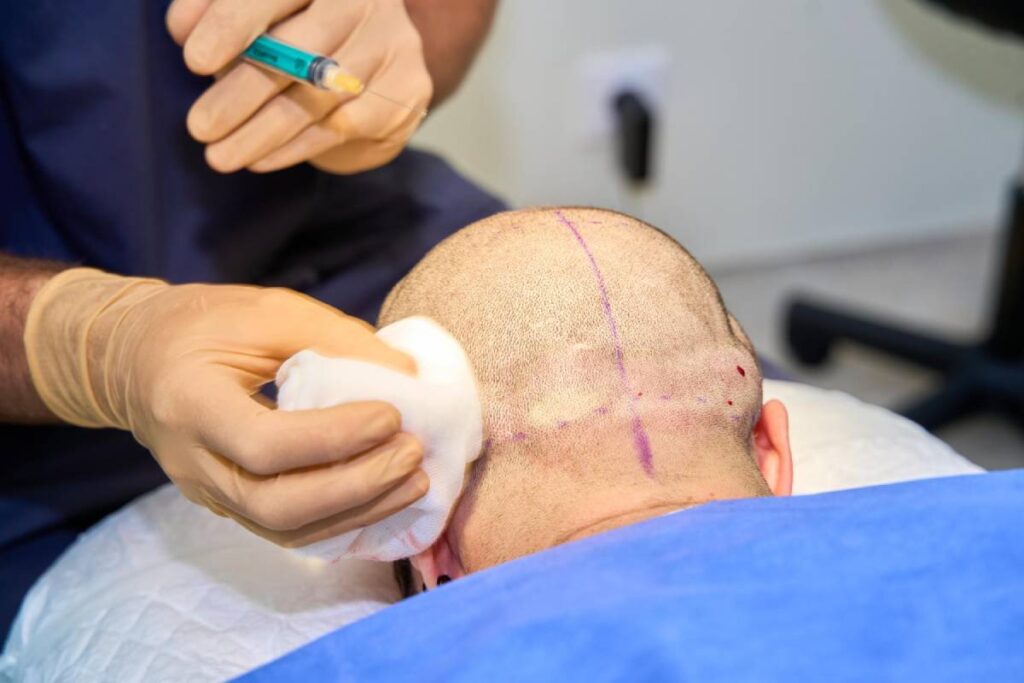Understanding Hair Transplantation
Hair transplantation is a surgical procedure that restores hair in areas affected by thinning or baldness. Two of the most popular methods are Follicular Unit Extraction (FUE) and Follicular Unit Transplantation (FUT). Both techniques aim to achieve natural-looking hair restoration, but they differ in approach, recovery time, and overall effectiveness.
Choosing between these two techniques depends on various factors, including hair loss severity, personal preferences, and the expertise of the surgeon performing the procedure.
What is FUE?
Hair transplantation using the FUE method involves extracting individual hair follicles from a donor area, typically the back of the scalp, and implanting them into the balding region. This technique does not require stitches, making it less invasive compared to FUT.
The key benefit of FUE is that it leaves minimal scarring, making it an excellent option for individuals who prefer short hairstyles. The procedure is performed under local anesthesia, and patients can expect a quicker recovery period with minimal discomfort.
What is FUT?
FUT, or strip surgery, is another common method of hair transplantation. This procedure involves removing a strip of scalp from the donor area and dissecting it into individual follicular units before implantation.
While FUT leaves a linear scar, it typically provides a higher yield of grafts in a single session, making it suitable for those requiring extensive hair restoration. The healing time is slightly longer than FUE, and patients must follow post-operative care instructions carefully.
Key Differences Between FUE and FUT
Both hair transplantation methods offer effective results, but they differ in several ways. FUE is a minimally invasive procedure with individual follicle extraction, while FUT involves removing a strip of scalp.
FUE is preferable for patients who want shorter recovery times and less visible scarring. On the other hand, FUT is often recommended for individuals requiring a larger number of grafts and who do not mind a linear scar on the donor area.
Recovery and Healing Process
Recovery from FUE is generally faster, with most patients returning to their normal activities within a few days. Since there are no stitches, discomfort is minimal, and the risk of complications is lower.
FUT requires a slightly longer recovery period due to the incision made in the donor area. Patients may experience mild swelling and discomfort, but these side effects subside within a few weeks. Proper post-procedure care is essential to ensure successful healing and hair growth.
Who is the Ideal Candidate for Each Procedure?
Choosing the right hair transplantation method depends on the patient’s hair loss severity, scalp condition, and personal goals. FUE is ideal for those who want a quick recovery and minimal scarring, making it a popular choice among younger individuals.
FUT is better suited for patients needing a large number of grafts in a single session. It is often recommended for those who have significant hair loss and do not mind a longer healing time.
Effectiveness and Long-Term Results
Both FUE and FUT yield excellent results when performed by a skilled surgeon. The success of hair transplantation depends on factors such as the quality of donor hair, adherence to post-operative care, and overall scalp health.
Transplanted hair grows naturally, and the final results become visible within 12 to 18 months. Proper care, including a healthy diet and avoiding stress, can enhance the longevity of the results.
Conclusion
When deciding between FUE and FUT for hair transplantation, patients must consider their individual needs, recovery preferences, and desired outcomes. Both methods are effective, but FUE offers minimal scarring and quicker recovery, while FUT provides a higher number of grafts in one session.
Consulting with an experienced surgeon is the best way to determine which procedure is most suitable for achieving the best hair restoration results.
Frequently Asked Questions
- Which hair transplantation method is less painful?
- FUE is generally less painful as it does not involve stitches, making the recovery process smoother.
- How long does it take to recover from hair transplantation?
- FUE recovery takes about 7-10 days, while FUT may take 2-3 weeks due to the incision in the donor area.
- Will there be visible scars after hair transplantation?
- FUE leaves tiny dot scars that are hardly visible, while FUT results in a linear scar that can be hidden with longer hair.
- Which method provides the most natural-looking results?
- Both FUE and FUT provide natural results when performed by a skilled surgeon.
- Can I shave my head after a hair transplant?
- Yes, but patients who choose FUT may have a visible linear scar if they shave their head completely.
- Is one method more expensive than the other?
- FUE is usually more expensive than FUT due to the time-intensive nature of individual follicle extraction.
- How long does a hair transplant procedure take?
- FUE can take 6-8 hours per session, while FUT takes around 4-6 hours depending on the number of grafts.
- Can I undergo a second hair transplantation procedure?
- Yes, some patients opt for a second session to enhance density or cover additional balding areas.
- When will I see full results?
- Full hair growth typically occurs between 12 to 18 months post-transplant.
- Which method is best for severe hair loss?
- FUT is often recommended for patients with severe hair loss as it provides a higher graft yield in a single session.












